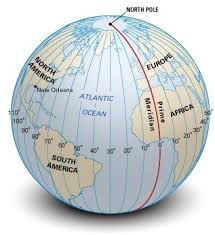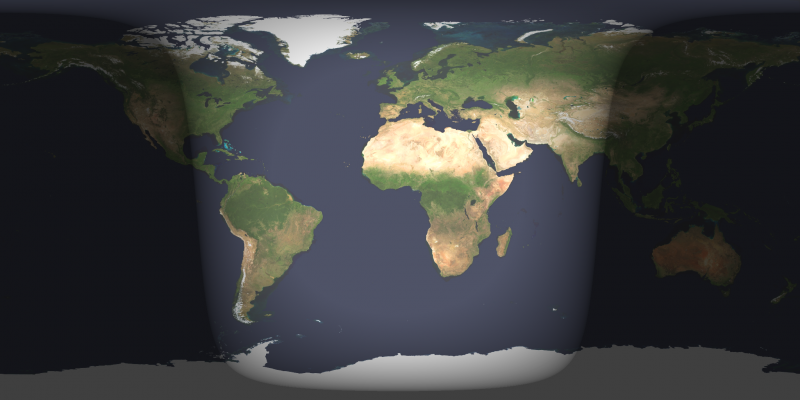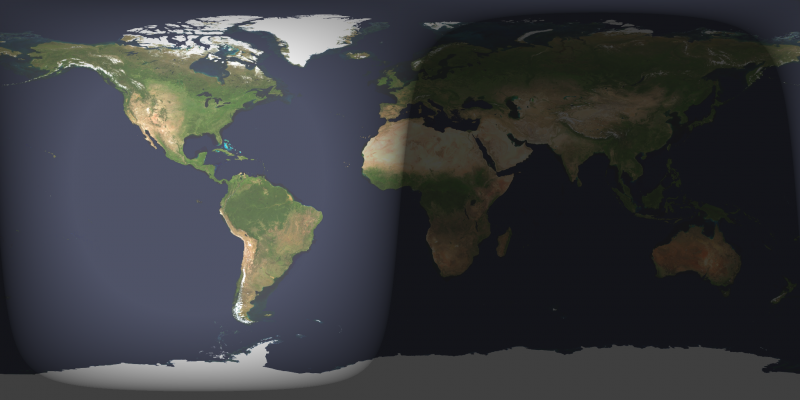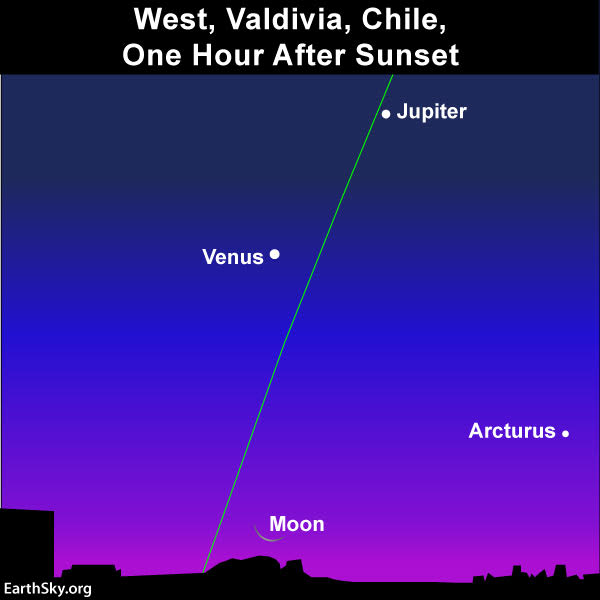For some sky watchers, it’s great sport to try to catch a young moon that might – or might not – fleetingly show itself as a pale, skinny crescent in the western evening twilight. The chances of catching the young moon after sunset on September 10, 2018, vary greatly around the globe. If you don’t see it, do look for the very bright planets Venus and Jupiter, now close in the west after sunset, as pictured on the chart above.
And, by the way, there are still a total of four planets visible after sunset, by the way, and the moon will pass by Venus and then Jupiter starting on the night of September 11.

As for Monday night’s young moon, Africa and South America – and of course islands in the South Atlantic – are especially favored. In fact, the Southern Hemisphere generally will have an easier time seeing this young moon, for reasons explained below.
The September 2018 new moon happened on September 9 at 18:01 UTC (translate UTC to your time). At new moon, the moon leaves the morning sky to enter the evening sky. It’s difficult – but not impossible – to see any moon that’s less than one day (24 hours) old. It’s nearly impossible to spot any moon that’s less than 3/4 of a day (18 hours) old.
When we say “24 hours old,” we mean 24 hours past the exact time of new moon. On September 10, the moon is 24 hours old at 18:01 UTC … it’s approximately a day old, as the sun sets on September 10, for everyone who lives on or near the prime meridian.

You’ve got to consider the age of the moon when the sun sets, for you. There’s only a narrow window for seeing the young moon, shortly after sunset but before nightfall. For most the world’s Eastern Hemisphere, the moon will be less than one day old at sunset September 10, and for the world’s Western Hemisphere, the moon will be over one day old at sunset September 10.
The worldwide map below via the U.S. Naval Observatory simulates the day and night sides of Earth when the young moon is only 18 hours old (September 10 at 12:01 UTC). The shadow line running through Asia is where the sun is setting. All places to the east (or right) of this sunset line will have the sun setting when the moon is less than 18 hours old; if that’s you, you’re not likely to see Monday evening’s moon. All places along this sunset line will see the sun setting when the moon is around 18 hours old. That’s a possible, but extremely difficult, observation.

The farther west you go, though, from the line of sunset above, the more time the moon has to pull away from the sun on our sky’s dome. So the moon gets easier to see.
The young moon will be easier to spot at places where the young moon is over one day old. The shadow line crossing Europe and Africa on the worldwide map below shows you where the sun sets one day after new moon (September 10 at 18:01 UTC (6:01 p.m.). By the time that sunset hits the Americas on September 10, 2018, the moon will be considerably older than one day old.
But there’s another complication. The ecliptic – the sun’s yearly pathway and the moon’s approximate monthly pathway in front of the constellations of the zodiac – makes a shallow angle with the horizon at sunset in late summer (which is it now, in the Northern Hemisphere), yet a steep angle with the horizon at sunset in late winter (for the Southern Hemisphere).
That’s why the Southern Hemisphere has the advantage over the Northern Hemisphere for seeking out a young moon in September.

In Philadelphia, Pennsylvania, the young moon is 29 hours and 16 minutes old at sunset September 10, 2018. That’s because the new moon happened on September 9, at 2:03 p.m. EDT, and the sunset occurs this evening, on September 10, at 7:19 p.m. EDT. Can you see the young moon from Philadelphia? Maybe or maybe not. The shallow angle of the ecliptic might keep the moon too low in your sky – too buried in evening twilight – to enable you to see it.
One final note. This particular September 2018 new moon resides somewhat north of the ecliptic, partially cancelling out the Southern Hemisphere’s advantage. It’s always something!
Remember, no matter where you are … it’s to your advantage to have binoculars handy and an unobstructed horizon in the direction of sunset for any young moon search.
Want to know the age of the young moon at sunset, and when the sun and moon set in your sky? Click here and be sure to check off the moon phases and moonrise/moonset boxes.

Bottom line: Africa and South America – and islands in the South Atlantic – have the best shot at the September 10, 2018, young moon. It’ll be easier to see, generally, in the Southern Hemisphere than the Northern. If you miss it, look tomorrow! We at EarthSky will be eager to hear reports on the young moon sightings from around the world. Tell us in the comments below.












